
The Andes Race
We finished the Inca Trail and said goodbye to Nadege and the kids and immediately needed to shift gears: It was time to race. Just two days after they left, we had our next trail race, The Andes Race 100km. This would be my (Julie’s) first go at a triple digit distance. Of course, in classic Juju and Jojo style, we didn’t just pick any 100km trail to do, we chose what we learned is considered to be one of, if not the most challenging race in all of South America.
The reasons for this title are many. The first is the general elevation. You spend most of the race over 3500m of elevation, and plenty of time even higher, over 4000m. The second is the elevation profile of the course. The first 15km is a non-stop climb from 2800m to 4700m, and that was just the first of four big passes we would have to cover. The third difficulty layer is the night. The race starts at 3pm, which means you run all night and then finish sometime the next day. Nights in the Andes mountains are long - they start around 6:30-7pm and last until 7am or so the next morning. Along with the running through the night comes the fourth layer of difficulty: the temperature. It is cold in the Andes mountains at nighttime, especially when you’re up over 4000m in elevation. Finally, the course is rather technical, especially considering you do the majority of it in complete darkness. Don’t ask me why I chose this race as my first 100km attempt because I really couldn’t tell you.
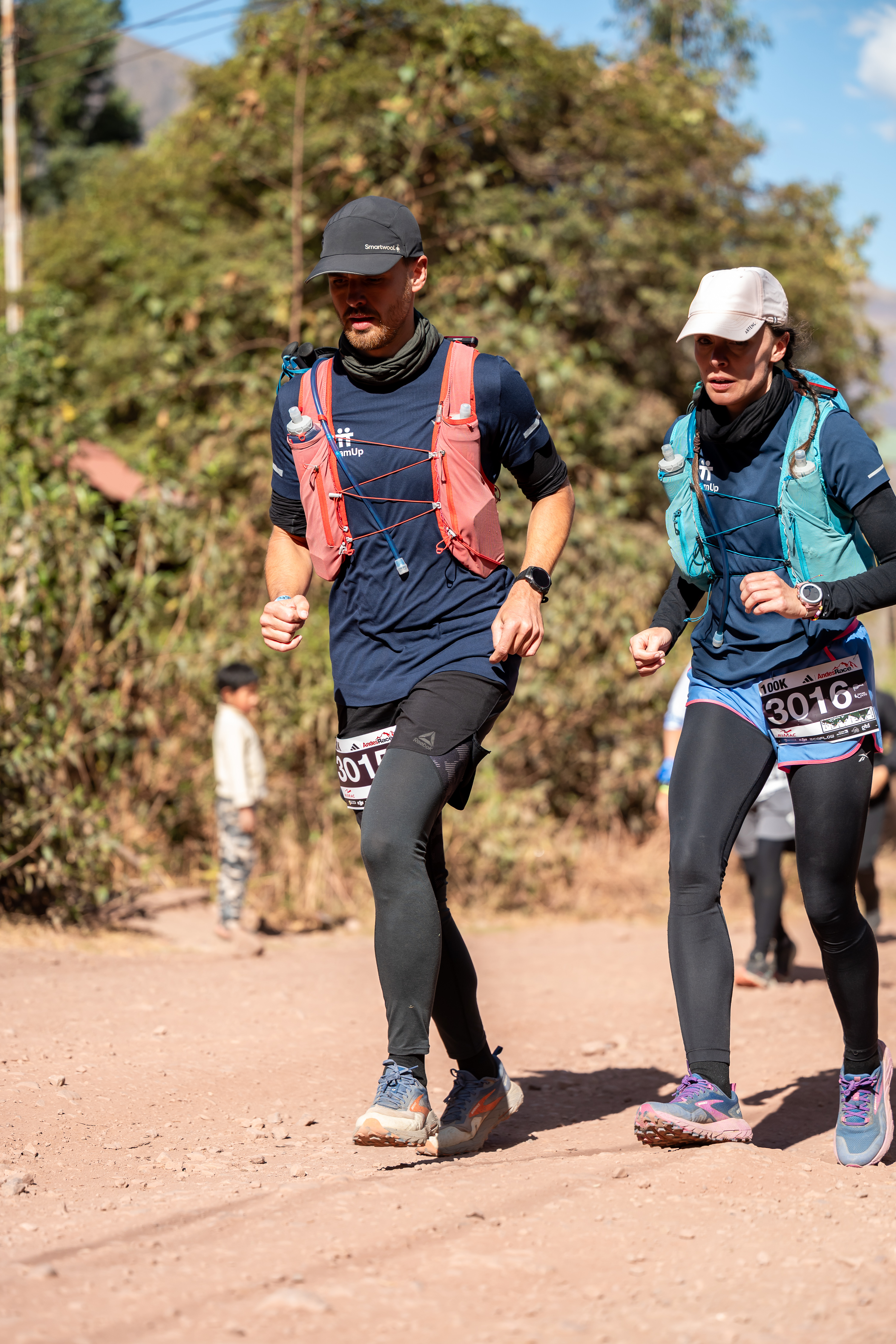
Our first order of business was to go to pick up our race kits and attend the mandatory race briefing. For all of the aforementioned reasons, the race directors take this meeting very seriously, as they go over all the important safety points for the race. In this meeting they went over required kit, weather, bag drops, and more, for both the 60km race distance and the 100km. It was here at kit pickup where we reunited with a friend we had made in Guatemala, Celine. Celine is from the french side of Belgium and is also a trail runner. When we met her in Guatemala we told her all about the different trail races we had planned throughout South America. We’d been following each other on Instagram ever since, and she decided to sign up for the 60km. Her race didn’t start until early Saturday morning, so we knew we’d eventually see her out on the trail.
Post-meeting we agreed to go over to Celine’s hostel later that evening for a pasta dinner the three of us together and then go to bed. One bonus to the race not starting until 3pm the next day (Friday afternoon) was that I felt less stressed about when to go to bed. Rather than having to go to sleep much earlier than usual, I knew as long as we went to bed at a fairly normal time, we could sleep in somewhat before taking the 11am shuttle bus to the start line.
The race started in a town called Urubamba, just a couple of hours away from Cusco. The next morning after a good breakfast we took the shuttle bus to the starting area, where we did our best to just relax and mentally prepare for the challenge that was to come. We spoke to a British man who had been living in Peru for 20 years, it was his eighth time doing the Andes Race. He kept saying This will be my eighth time completing this race - if I finish, that is. This didn’t do much to quell my nerves. This man lived and ran in the Cordillera Blanca, had completed this race seven times previously, and still wasn’t 100% confident in his capacity to finish it.
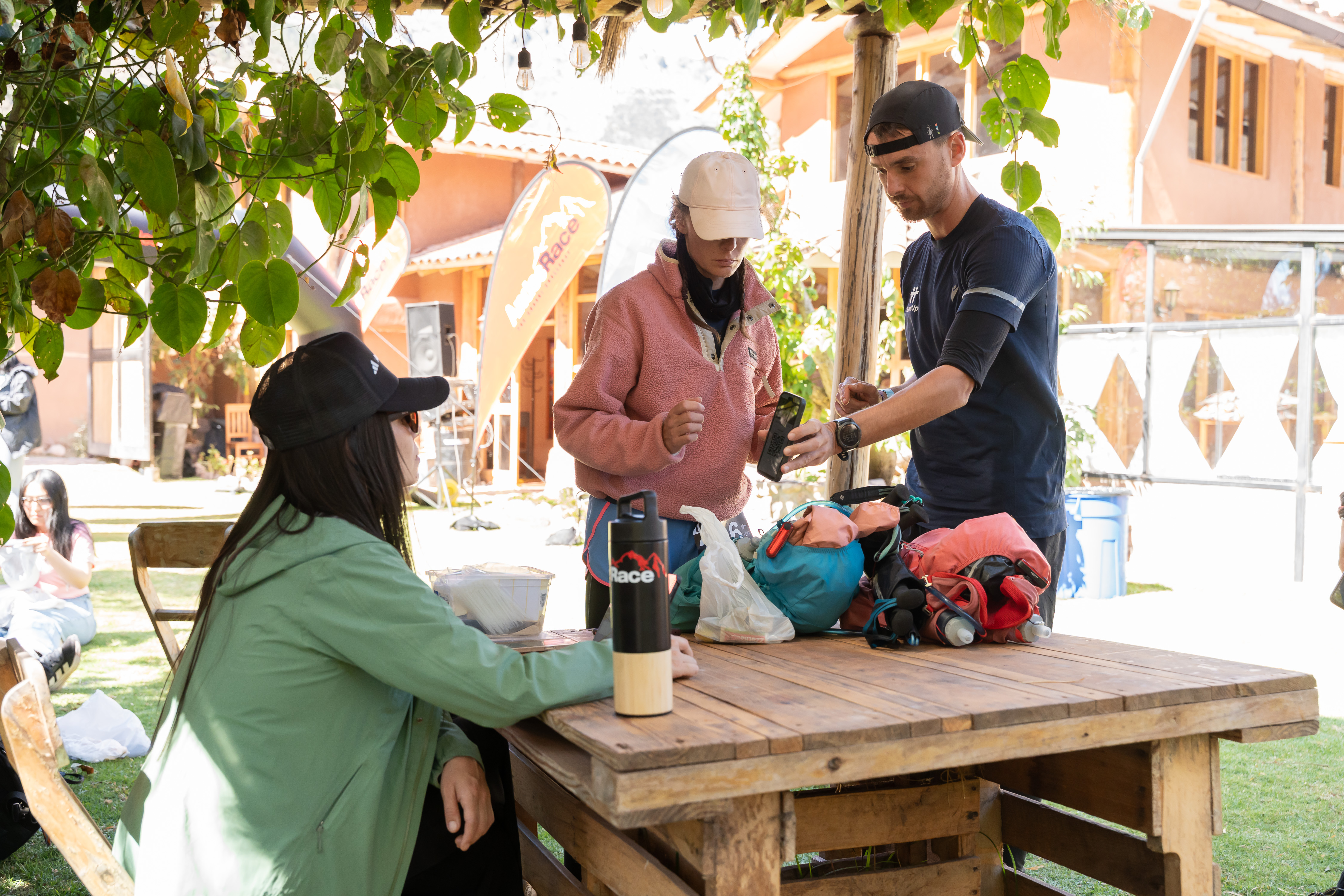
Soon it was time to have our required kit verified, warm up a little bit, and get ready to run. Standing in the starting area, I had this weird feeling in my stomach that I didn’t quite understand. I chalked it up to nerves and tried to put it out of my mind. As we stood on the startline and they began the ten second countdown, I felt so overwhelmed by nerves and anxiety I was almost in tears. Race nerves I am used to, but the emotion that I was experiencing behind this one was new. Again, I thought it was just because I was attempting such a massive challenge and tried to breathe and remain calm. As we were running, however, I was really struggling to shake the anxiety and the weird feeling in my stomach. About three or four kilometers in, that’s when I understood where this was all coming from: my period. It wasn’t supposed to arrive until the following week, and my period hadn’t arrived so unpredictably early in years. Of course, just kilometers into my first ever 100km race, it decided to do just that - what luck.
The weird feeling in my stomach gave way shortly after to cramping and discomfort. What was worse, however, was the even bigger wave of anxiety that it brought over me. I had slowed down a bit and Jo turned back to ask if I was okay. I was not, and I burst into tears. This would be the first of five times I would cry during that first ascent and before arriving at the first aid station 20km into the race. I was in pain, yes, but to be honest it was by far not the worst period pain I had ever felt. It was more so the frustration, the heaviness I felt in my body, and the “drained” feeling that only women reading this will truly understand that was dragging me down. Getting up over the first pass of the race was brutal. It was up at 4700m, it was windy, incredibly cold, dark, and to boot a fog had rolled in just in time for a fairly technical downhill. Our headlamps were almost useless, their light getting dispersed by the fog. By the time we arrived at the aid station I was really not sure what to do. The medics asked how we were feeling, and I explained that my period had arrived and I had cramps and I was cold and to be honest, things were not great. They offered to give me some medication that would help with the cramps, which I accepted. As the medication kicked in and the edge eased off of my cramping, Jo and I decided to not quit yet and at least go to the next aid station which was about another 20km away.
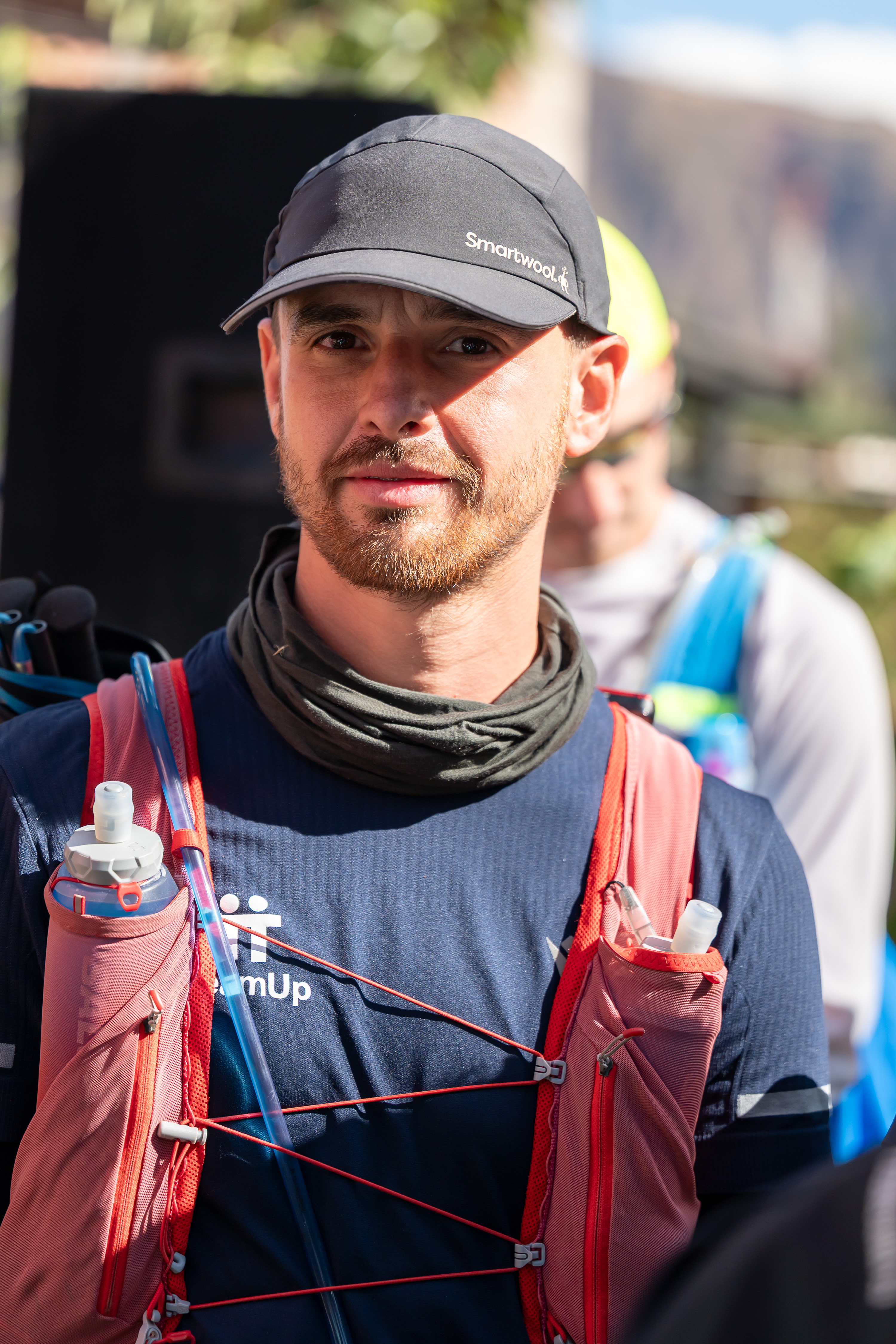
Off we went into the night. I don’t know if the cramps were worse than I had realised or if the medication maybe just mentally gave me the feeling that I was able to take some control over the surprise my body had gifted me, but I was truly feeling quite a lot better. I was powerful in the uphill and my downhill, usually my weak point, was fantastic. We were passing everyone who had passed me previously - the distance, which was feeling impossible, was now feeling attainable. We arrived at the second aid station feeling strong and optimistic. Next stop: the aid station at kilometer 60, where Celine’s race would be starting from.
Throughout the next 20km, I was still feeling strong, but I noticed that my breathing was starting to change. At first it was just a bit of coughing anytime we arrived at a checkpoint where the organizers had local indigenous volunteers dolling out cups of hot water and other things. I thought that perhaps it was just the cold, dry, less oxygenated air. When we arrived at the 60km aid station, I was coughing quite a lot. The medics seemed concerned, but I told them I was fine, it was just the cold air, and we continued on. The next 10km to the 70km aid station were really hard. It was a really difficult climb, and the aid stations were not so full of the things we were used to, so we didn’t realize we were a bit low on sugar. Celine’s race was now underway, and she passed us on the way up, offering a snickers bar to help us out. By that point, I was beginning to notice that my breathing was not so great, which was making the climb even tougher. By the time we arrived at the top of the pass, the sun was rising. It was now daytime, and we just had an hour or so of mostly downhill until the 70km aid station.
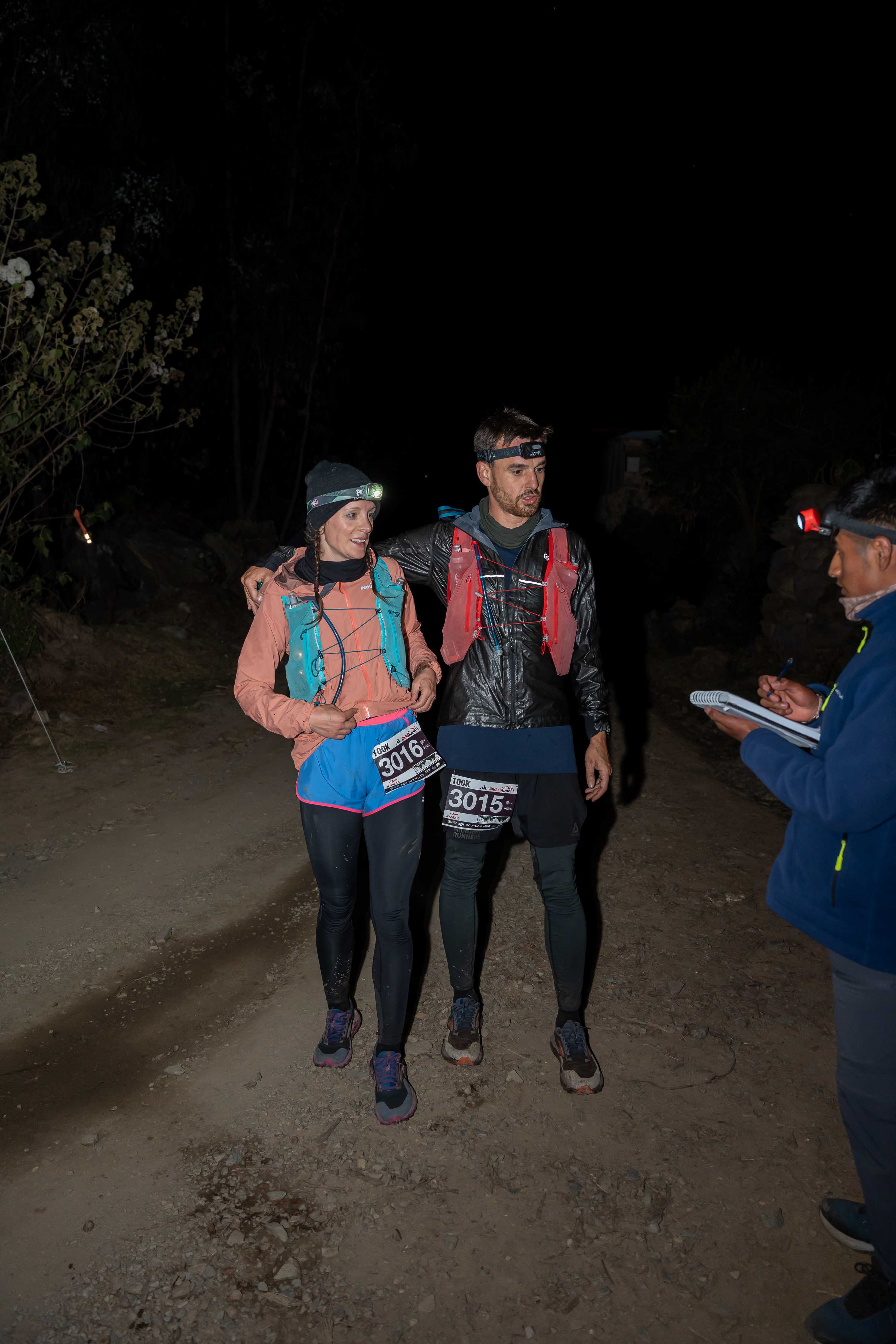
This point in the race was hard. We were exhausted, having run all night long, we were low on sugar, and I was having a hard time breathing. When we finally arrived at the aid station and sat down, I could barely stop coughing long enough to take a drink. The medics did not like this, naturally, and wanted me to reconsider continuing on. Jo, who upon arriving had gobbled up a few oranges worth of orange slices, had reloaded on sugar and was feeling much more energetic. I wasn’t so perked up as he was, my coughing was definitely worrisome, but I didn’t want to quit, so we decided to try to go on. It was 6km up to the final pass then another 6km down to the next aid station at kilometer 82. It seemed doable - until we started running. Even just trying to run downhill, my breathing was so strained it almost sounded like I was having an asthma attack, even though I don’t have asthma. Jo, who used to suffer from asthma and is familiar with this kind of thing, was doing his best to help me calm down. While yes, there was clearly something going on that was making breathing difficult, the anxiety that was giving me was making it worse. I tried to keep going, but finally I sat down on a rock, coughing and wheezing, and looked at Jo not sure what to do. Then I said to him If Brittany (my twin sister) were here right now, she’d tell me to stop. Now, I don’t want anyone reading this to think that my sister holds me back or that she’s not one to encourage pushing through discomfort, mental blocks, and the like. She is very familiar with that side of running and sports. What she knows also all too well, however, is the difference between discomfort and mental side of running and when your health is actually at risk. Looking up towards the final pass, barely being able to breath if just trying to jog downhill, I knew that trying to push further while feeling like I was breathing through a straw wouldn’t just be hard, it would be dangerous. With that, we decided to walk back up to the aid station, where one of the race directors heard me wheezing before he saw me. He, along with Jo, helped me walk back up the hill and grabbed the medics to come and help me out. They listened to my lungs and peaked into my throat, telling me that it seemed that I had developed laryngitis. That was it - my Andes Race adventure was over, a big old fat DNF.
They sat me inside to make sure I could stay warm. We had to wait until the cut off time a couple of hours later before we would then get a ride to the finish line in the town of Ollantaytambo. Seeing how upset I was, Jo decided to stay with me, even though he could have continued on by himself to finish the last 30km. I was crying, upset that I didn’t finish, yes, but more so out of frustration for all the things that happened that were simply out of my control. First my period arriving a full week early, then the throat infection. After the July I had had, I felt like I just couldn’t catch a break.
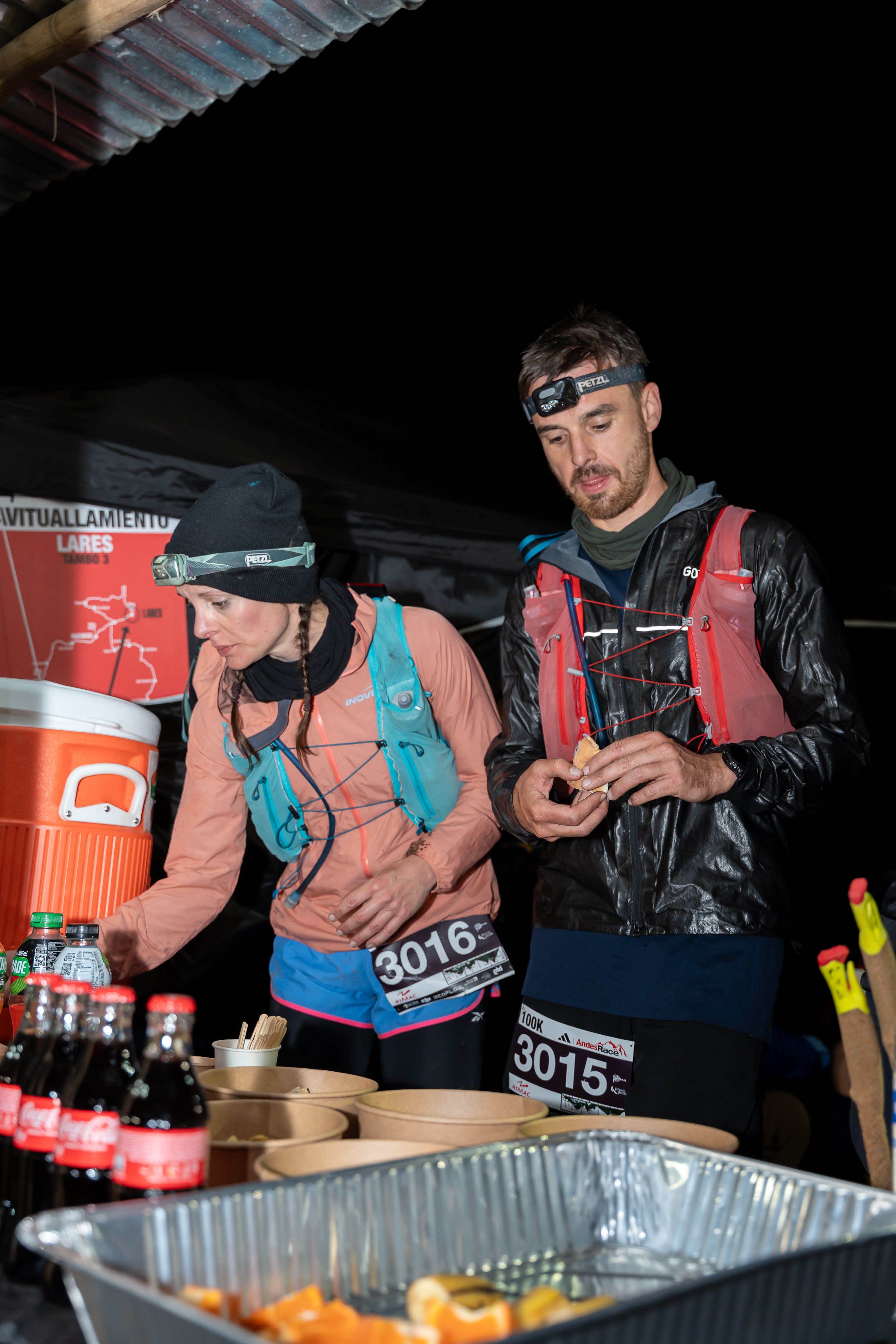
The race director saw how upset I was, and came over and asked if he could give me a hug. He then explained to me that, rather than feeling sad about not finishing, I should feel proud of myself. I had toed the line of the toughest race in South America and was doing well. He told me that he, himself, had never finished the race, and it was him who had designed the course. It was very kind of him to take time to do that, and in the end, he was right: Of the 50 people who had started the race, only 18 finished it, and many of them had dropped out long before I did.
Exhausted and definitely disappointed, we boarded the shuttle back to Cusco. The next day we had dinner with our friend Celine, who had placed fourth in her category in the 60km race but who was also shocked at the difficulty of the course. From there, we said our goodbyes both to Celine and Peru. After two months in the country, it was finally time to move on. We were headed to Bolivia for a short time before making our way to Chile, where another visitor and another trail race awaited us.
